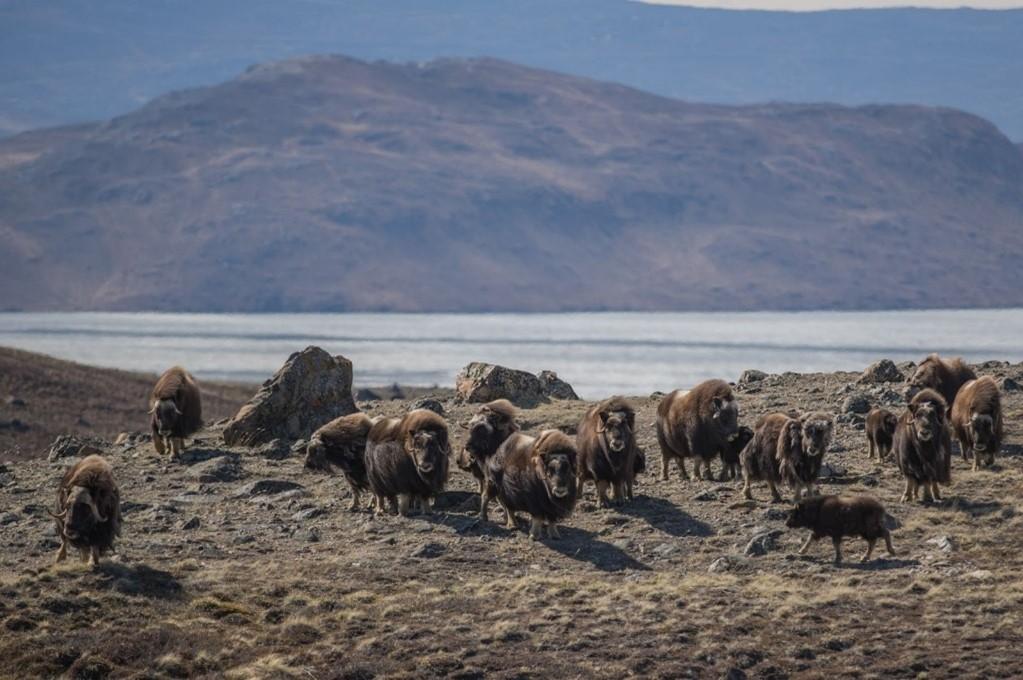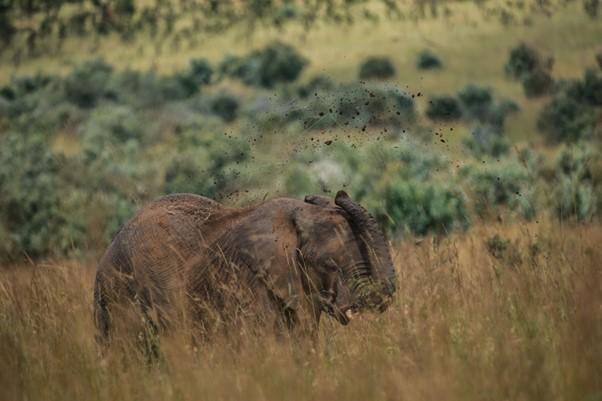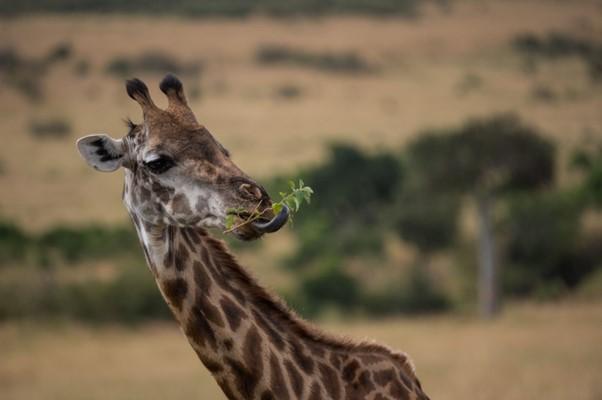An international team carried out a new meta-analysis across six continents which establishes that wild large herbivores affect ecosystems in numerous important ways and promote ecosystem variability.
They conclude that conservation and restoration efforts should include large herbivores given their profound, general importance for ecosystems, not least effects that are likely to make ecosystems more resilient to climate change.
Jeppe Kristensen, a postdoc fellow working in ecosystems research at the Environmental Change Institute at the University of Oxford, was one of the team of researchers. He said:
'As rewilding is becoming an important restoration strategy in the UK and Europe, we need to understand effects of animals on both biodiversity and other ecosystem functions. We encouragingly find generalisable effects on the diversity of other plants and animals particularly, but we also find that we still have a way to go before we understand the effects of large animals on soil biogeochemistry, which is critical to predict their effects on climate change mitigation."

For millions of years, a variety of large herbivores, or megafauna, influenced terrestrial ecosystems. Among many others, these included elephants in Europe, giant wombats in Australia, and ground sloths in South America. However, these animals experienced a wave of extinctions coinciding with the worldwide expansion of humans, leading to dramatic but still not fully understood changes in ecosystems. Even the survivors of these extinctions strongly declined and many are currently threatened with extinction.
While there are many case studies as well as theory about the effects of large animals, formal attempts to quantitatively synthesise their effects and establish generality has been lacking. The new study was conducted by an international team led by researchers from Aarhus University and the University of Göttingen.
Their paper, Meta-analysis shows that wild large herbivores shape ecosystem properties and promote spatial heterogeneity, published in Nature Ecology & Evolution has gathered all these individual case studies and they have analysed the findings together to show that overall, large animals, or megafauna, do indeed have a variety of generalisable impacts – impacts that are likely missing from most of today’s ecosystems.
Large animals’ impact on ecosystems
Among the identified general impacts of wild large herbivores are shifts in soil and plant nutrients, the promotion of open and semi-open vegetation and the regulation of the population of smaller animals. Moreover, one of the key findings of the studies is that megafauna promote ecosystem heterogeneity by increasing the structural variability in the vegetation.
Lead researcher Jonas Trepel, said:
The positive impact on variability in vegetation structure is particularly noteworthy given that environmental heterogeneity is known as a universal driver of biodiversity. While our study mostly looked at the impact of megafauna on small scales – the positive impact on ecosystem variability may actually mean that they promote biodiversity even on the landscape level.”
Large herbivores change vegetation structure by consuming biomass, breaking woody plants, and trampling smaller plants, and – impacts that are hypothesised to depend on the animal’s body size. Given that the analysed dataset spanned two magnitudes of body size (45-4500 kg), the researchers were able to specifically test how this important trait shapes the impact of large animals. They found, for example, that megafauna communities which include larger herbivores tend to have positive effects on local plant diversity while communities composed of smaller species [eg <100 kg] tend to decrease local plant diversity.
Erick Lundgren one of the senior authors of the study, from Aarhus University, said: “The different effects of large and small herbivores on plant diversity could for example be because larger animals can eat lower-quality food such as branches and stems, which may result in proportionally greater impacts on dominant plant species and thus release less competitive plants from competition.” Co-author, Elizabeth le Roux, adds: “These findings support the expectation that many small herbivores can not fully compensate for the loss of a few large ones."

The benefits of a meta-analysis
This study is a so-called meta-analysis. This means that the researchers have analysed data from all available studies on the subject to find general patterns. Meta-analyses are especially powerful in their conclusions because they draw on big data pools and make it possible to draw conclusions that go beyond a local context.
While many recent ecological studies have shown or hypothesised the importance of large animals in ecosystems, the researchers say the meta-analytical study is an important step forward by synthesising direct experimental and semi-experimental evidence from across the globe to assess the generality of these effects quantitatively.
Senior author Jens-Christian Svenning, director for Center for Ecological Dynamics in a Novel Biosphere (ECONOVO), a Danish National Research Foundation center of excellence at Aarhus University, said: “This global meta-analysis shows that large herbivores have important general effects on ecosystems and their biodiversity. Importantly, our analysis shows that these effects cut across a broad range of ecologically important phenomena, from soil conditions to vegetation structure to plant and animal species composition, affecting not only their general state but also their variation across landscapes.”
How did the researchers get these results
A key aspect of the included studies (297 studies, including 5990 individual data points) was that they compare adjacent areas with clear differences in the megafauna community (ie megafauna present or absent) due to known reasons. The vast majority of studies in the data set are so-called exclosure studies, in which some parts of a field site are fenced up to prevent large animals from entering. By comparing different plots inside and outside of the fences, researchers are then able to assess in which ways megafauna impact the ecosystem.

Importance of ecosystem biodiversity in responding to global change
The identified general importance of large herbivores for ecosystem functioning implies that important functions are missing due to the loss of wild megafauna. This may affect the approach to nature conservation and ecosystem restoration.
Jonas Trepel said: “The majority of today’s protected areas are missing large animals – and thus also an important range of functions. So even areas we consider to be pristine ecosystems are probably not as natural as we may think. Reintroducing large animals could be a key avenue to make these areas a bit more dynamic and used to disturbances.
“By increasing the structural variability in an ecosystem, large animals may provide some refuges, for example during extreme weather events, but also open up more available niches for other species. This could prevent one or a few species from dominating and allows species with similar ecological attributes to coexist - which in turn would make the ecosystem more resilient. Ultimately, that may help them to deal with the consequences of global change.”
Given the important functions large animals have for ecosystems and their biodiversity, the researchers conclude that it is crucial to not just protect the few remaining megafauna species, but also reestablish megafauna populations as part of restoration efforts to achieve positive outcomes for Earth's biosphere, not least under the increasingly unprecedented global environmental conditions.
Read the paper in full: Meta-analysis shows that wild large herbivores shape ecosystem properties and promote spatial heterogeneity

